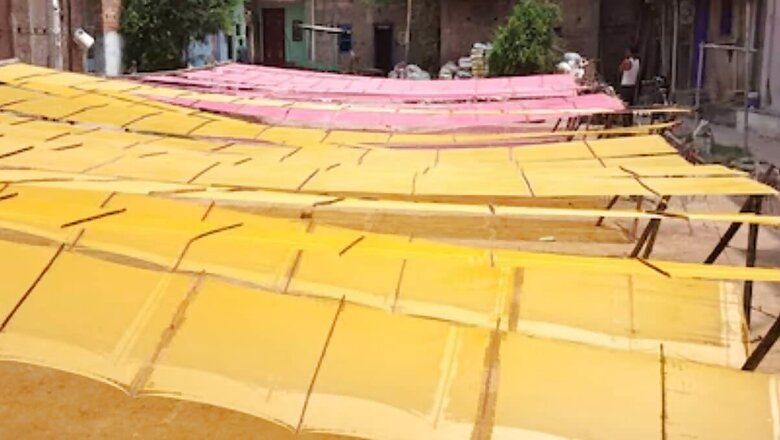
views
Pitambaris are saffron-coloured cloths used in Hindu tradition to cover bodies for cremation. They are also used in the religious worship of Mahadev. The fabric which carries high significance in Hindu Dharma is made in bulk at Gaya, Bihar. It is made on a large in Patwa Toli and Shivcharan Lane of Manpur. It is also known as Mini Manchester of Bihar. The Pitambari made at these places is exported to other states like Jharkhand and West Bengal. However, the business for these clothes is witnessing a dip in the market. As per the local weavers of Patwa Toli, only three people are left in the group who are involved in making Pitambari from handloom. Powerloom manufacturing has replaced the traditional methods of weaving these clothes.
A few years ago, 30-40 people were involved in weaving Pitambari using a handloom. One of the prime reasons for the downfall of this business is less profit and high labour. Some people of the Tanti community are still involved in making Pitambari through handlooms. It takes two days to make one Pitambari and costs Rs 3. It is sold at a wholesale price of Rs 6. The weavers earn a profit of Rs 3. In such a situation, Pitambari is made in bulk with less labour from the power loom. It is made in large numbers but the quality is compromised, claims the local weavers.
Satyendra Kumar Paan, a weaver associated with the business of Pitambari, says that only a few people make Pitambari from handloom. He pleads to the government to pay attention to the handloom weavers.” We don’t even get a loan. That’s why we are not able to expand this business. This business earns a daily income of Rs 300-400.” said Satyendra Kumar Paan while talking to Local18.
On average, one and a half lakh pieces of Pitambari are made monthly through power loom machines. These are of cotton, polyester and Khadriya quality. Its price ranges from Rs 5 to Rs 50 per piece in the wholesale market. As per media reports, more than 10,000 workers are employed to work on 12,000 power looms in Patwa Toli.
Apart from these, more than 10,000 workers belonging to different categories including dyers, thread sorters, and cloth polishers are also associated with this industry. More than 25,000 families are associated with this business and earn their livelihood.

















Comments
0 comment